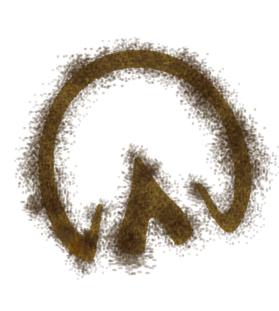Hay Everyone!
Welcome to the New Year! Brrrrr! These last couple of months have brought some cold weather. I watch all my two-legged friends bundling up in all their layers and shake my head in wonderment. They don’t understand the joy of a morning frolic in the crisp weather. This is the perfect weather to show off my best moves! (It’s even more fun when the mares next door are looking my way.)
Along with the fun, the winter weather can bring some special concerns and management challenges for horse owners. Are you wondering what these concerns and challenges might be? Well, wonder no longer. I can fill you in on everything you might need to know.
We’re going to start by talking about nutrition. (It shouldn’t come as a surprise. By this point, you should all know what my favorite topic is!) Like many other animals, horses need more calories to maintain their body temperature when the ambient temperature (that’s the temperature in the environment) drops below a horse’s lower critical temperature (LCT). Now, you may be wondering what the LCT is. I wondered the same thing. In my research, I found out all mammals have a thermoneutral zone. This is the range of temperatures in which an animal can easily maintain their core body temperature without expending extra energy in the form of calories. Temperatures above or below this range will result in increased energy expenditure in the form of calories for the animal to cool or warm itself. The thermoneutral zone, LCT, and upper critical temperature (UCT) are different for each species. Age and other individual factors can also cause the LCT and UCT to change. For most mature horses with a winter hair coat, the LCT is approximately 18°F. This means horses may need extra feed in the winter to maintain their weight and body condition. The best way of providing these calories is to provide more hay for the horse. The process of fermenting the fiber in the hay produces heat which helps keep the horse warm. I’m going to tell the folks at the Equine Science Center that I expect some additional hay in my feeder this evening!
The other nutritional concern in the winter is ensuring horses have access to a sufficient supply of fresh water. Horses cannot use snow and ice as the sole source of water in the winter. Cold temperatures and frozen water buckets often lead to insufficient water intake in the winter months and an increase in the number of impaction colics. Colic is definitely not something you or your horse want to go through. What steps can you take to make sure your horse is staying hydrated? One of the best options is to use a water heater. This device keeps your horse’s water unfrozen and encourages it to drink more. You do have to check the heater daily and be careful to follow all the instructions. Check to make sure your water heater is setup correctly and no shorts are present. Incorrect installation and use can lead to your horse getting an electrical shock every time it tries to drink. Eek! My whiskers are tingling just thinking about it. If you are not using a heater, then you need to clear ice off water tanks and buckets at least daily and provide fresh water to your horse.
While it is tempting to cut down on your horse’s exercise during the winter, so you can avoid the cold, this isn’t the best choice for your horse’s health. Providing turnout for your horse will allow it to move around and still engage in some physical activity. If your horse is stalled, you’ll want to make sure you provide some sort of physical activity for your horse. If you choose to ride your horse, be aware that deep snow can cause injuries just like deep sand can. Proceed cautiously, especially over frozen and slippery ground. You never know what might be lurking beneath the snow’s surface! You may also want to talk about shoeing options with your farrier. Many owners opt to add snow pads and additional traction (caulks or borium) to their horse’s shoes during the winter.
Finally, we’ll talk about shelter for your horse. Most horses can comfortably live outside all winter as long as they have access to some sort of shelter such as a windbreak in the form of a tree line or a run-in shed. Too much time indoors can be bad for your horse’s health, especially its respiratory health as many barns have poor ventilation. If you do have your horse inside, provide as much ventilation as possible by keeping windows open. If you will be exercising your horse routinely and causing it to sweat, you may choose to clip its haircoat to help facilitate the cool-down process. If you do so, you will need to blanket your horse and may need to provide more shelter. Most other horses do not need to be blanketed. If you want to know more about blankets and blanketing, check out this factsheet. If you do blanket your horse, be sure to remove the blanket daily and check for potential problems.
If you want to learn more about any of the topics mentioned, there are additional resources you can take a look at. With some help from the folks at the Center, I’ve compiled a short list of helpful resources.
- Fact Sheet on Winter Horse Care
- Winter Horse Care from eXtension
- Winter Horse Care from The Horse
- Winter Horse Care from the University of Minnesota
- Winter Horse Care Video from Utah State University
Use this information to keep your horse healthy this winter! I’ll be reminding the folks at the Center about some of the most important facts I came across.
Until Next Time.
Your Friend,

Lord Nelson
